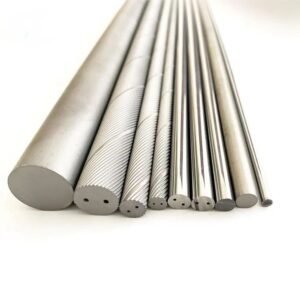If you've spent any time in the machining world, you're likely familiar with the importance of threading. Whether you’re manufacturing bolts, nuts, or precision parts, threads are everywhere. But when it comes to choosing the right insert for the job, the terms ER and IR are ones you’ll hear often. These two types of threading inserts are essential, but what’s the difference between them, and when should you use one over the other? Let’s dive into the thread-ception of ER vs IR!
ER Threading Inserts: Masters of the Outside World
ER threading inserts are like the bold adventurers of the machining world. These inserts are designed to tackle external threading – that is, threads on the outside of a workpiece. Think of the classic bolt or the outer threads on a screw. If you’re machining something that needs a nice, crisp, external thread, ER inserts are your go-to tool.
- Use Case: ER inserts are typically used in applications such as cutting threads on bolts, shafts, or outer diameters. If you’re manufacturing items like nuts, bolts, or even the external threads of pipes and fittings, you’ll likely reach for ER inserts.
- What’s in the Design?: These inserts are designed with geometry that ensures a clean and precise cut on the outer surface. The inserts come in various thread profiles, making them versatile for different thread types (e.g., metric, UN, NPT).
- Toolholder Compatibility: ER inserts are paired with toolholders designed to work on the outside of the workpiece. Whether you're cutting a large diameter or threading fine threads, the ER system allows for high-speed and high-precision external threading.
IR Threading Inserts: The Unsung Heroes of Internal Threading
On the flip side, we have IR threading inserts. The "I" stands for internal, and the "R" generally means right-hand thread, though there are also left-hand variations. IR inserts are designed specifically for internal threading – think of threading inside a hole, bore, or tube.
- Use Case: IR inserts come into play when you need to create threads inside a workpiece. This could be threading the inside of pipes, machining internal bores for valves, or creating threads inside an engine component. Any application where the thread needs to be cut on the inside of the material is where the IR insert shines.
- Design for Precision: The design of IR inserts enables them to effectively cut threads inside tight spaces. These inserts have specialized geometries to ensure smooth cutting, even in deeper or narrower holes. Their sharp cutting edges make them ideal for producing clean, precise internal threads, whether it’s for a bolt hole or a critical aerospace component.
- Toolholder Compatibility: Unlike ER inserts, which work on the outside, IR inserts are used with toolholders that fit inside the workpiece. These toolholders are designed for accessibility within tight internal spaces, ensuring that the insert can cut threads precisely along the inner surface.
The Key Differences Between ER and IR Inserts:
- Location of Threading:
- ER inserts are used for external threads, making them perfect for the outside surfaces of your workpieces.
- IR inserts are used for internal threads, allowing you to thread holes, bores, and tubes with ease.
- Toolholder Design:
- ER inserts work with toolholders designed to access the outside of the workpiece.
- IR inserts, on the other hand, require toolholders that fit inside the workpiece to thread internal surfaces.
- Applications:
- ER inserts are ideal for creating threads on the external surfaces of bolts, pipes, and shafts. They’re used in industries like automotive, aerospace, and general machining for external thread applications.
- IR inserts are perfect for machining internal threads, such as on the inside of pipes, hydraulic components, or valve housings.
- Thread Profiles:
Both types of inserts can be customized for different thread forms (e.g., metric, UN, NPT), but the application itself dictates which type of insert is used.
Which One Should You Choose?
Ultimately, whether you choose an ER or IR insert depends on your specific needs. Here's a simple guideline to help you decide:
- Go for ER if you're dealing with external threading needs, like creating threads on the outside of a shaft or bolt. These inserts are the go-to for machining outer threads with precision.
- Choose IR when you need to cut internal threads – perhaps in a bore, tube, or any component requiring threads inside the material. Whether you're threading a hole in a valve or creating a precision fitting, IR inserts will get the job done.
Final Thoughts: Threading Doesn’t Have to Be Complicated
While ER and IR threading inserts may sound like technical jargon, they’re really just two sides of the same coin. Both are designed to help you create clean, precise threads, but they’re suited for different types of threading – external versus internal. By understanding the differences and knowing when to use each type, you’ll be able to tackle any threading job with confidence.
So next time you’re gearing up for a machining project, remember: ER for the outside, IR for the inside. It’s that simple!
Happy threading!





